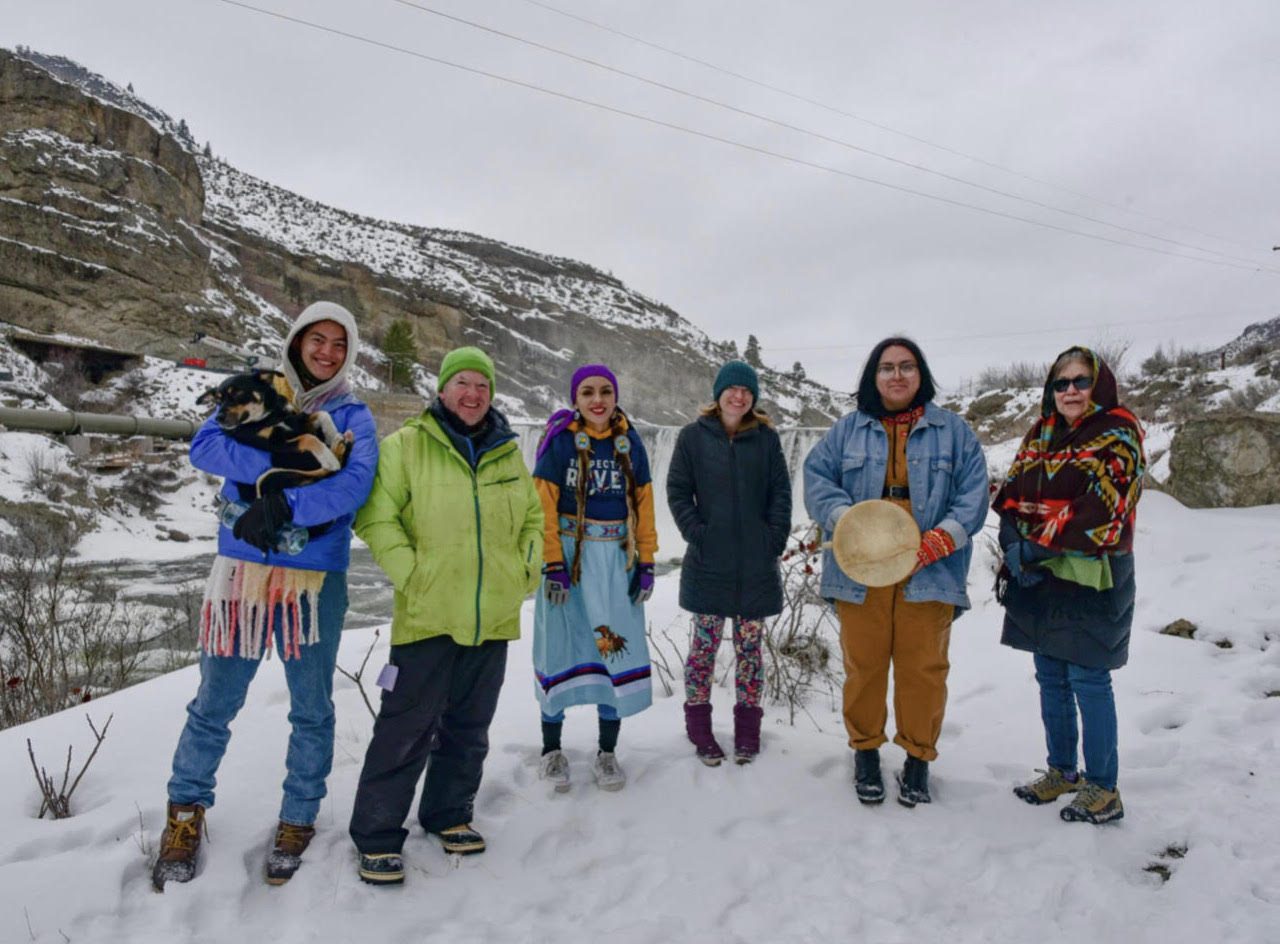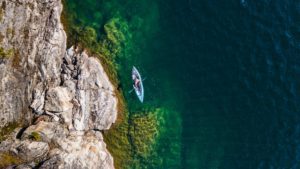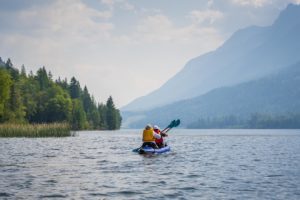
Aboriginal Outfitters and advocating for the removal of Enloe Dam
A Q & A with Executive Director Beverlee Joy Abrahamson
Beverlee Joy Abrahamson, a Colville Tribal Member and descendant from the Rocky Boy & Spokane Tribes, is spreading the word about restoring the Similkameen River in North Central, Washington. Abrahamson’s efforts started when she recently founded Aboriginal Outfitters while simultaneously attending Eastern Washington University and working toward a degree in Elementary Education and American Indian Studies. To restore the Similkameen River, Aboriginal Outfitters is on a mission to remove Enloe Dam. To learn why this is such a critical move ecologically, we caught up with Abrahamson for a Q&A.
What sparked the creation of Aboriginal Outfitters?
The idea was sparked after I created an Instagram page promoting clean and healthy outdoor lifestyles with a focus on taking care of Mother Earth and our community. My idea was to get a group of young indigenous people and other people of color wanting to make a change, promote the same goals, and hopefully, eventually do the same in other communities throughout Indian Country. However, once everything started to come together, I realized that our goals were huge and to accomplish them we needed more community support, so we decided to incorporate into a nonprofit. [Follow @aboriginal.outfitters]
When did you personally start feeling the impact of Enloe Dam?
I think this part of the story begins with Salmon. When I was a young girl my favorite food was Salmon. I was also a curious kid and I realized the salmon we caught from the river was the salmon we ate. I understood how important the teachings from my elders were, and how essential it is to be a caretaker of the land and water as an Indigenous person. Salmon has always been the main food source for all tribes along the Columbia River.
It wasn’t until I was in middle school, I started noticing the impact of dams on our homelands. What sparked my interest was when the Native American Club took us to tour the Grand Coulee Dam, and the only thing I remember from that tour is the guide saying the government paid the Native Americans money, or something known as a “dam settlement” to put the dam there. As a Middle Schooler, this didn’t sit right with me and I knew there was way more to the story. I had the opportunity to work at Fish & Wildlife for a short amount of time and I was fascinated by how much their program dedicated to the revitalization of the Salmon and Steelhead runs. I researched my tribe’s history, and soon learned why our tribe dedicated so much time and money to the Salmon Runs.
Soon after, I learned about the Enloe Dam on the Similkameen River and how much controversy there was about it one- not working, and two- how it was negatively impacting wildlife. There were very specific issues about the discussion of salmon and people claiming that salmon never existed in this part of the river. The more we learned, the more we realized that history was being manipulated in different ways and ancient Indigenous legends were being weaponized and used inappropriately to further organizations’ agendas. What Aboriginal Outfitters is trying to address is that there is a man-made structure that hasn’t worked for 65 years sitting in the river. We know that nature is resilient, but we also know that the river deserves to be taken care of. Turning a blind eye to an obsolete structure that prevents wildlife passage just doesn’t make any sense.
I was then invited to advocate for the Similkameen River on a broader scale and help to promote the removal of Enloe Dam. I was shocked to realize how many people in my community did not even know the Enloe Dam existed and how the Okanogan River was being directly impacted by it. When we presented some ideas about reaching a younger audience, specifically Indigenous youth, we were met with resistance because the groups working to remove the dam wanted to focus more on “policy people” in positions of power, which we know are majority old and white. This infuriated me because in my culture, youth are incredibly important because they are the future. To leave them out of the conversation is unfair because they are the ones that will end up with the responsibility to take care of the land.
How do you feel about women’s role as protectors of water?
I feel that the Indigenous Women and Water article published by Solutions Journal says it best: “Indigenous women have a strong and distinct physical and spiritual relationship with water and have traditionally been tasked with caring for it as it provides us with our first water environment in the womb, announces our birth, and sustains life. Thus, Indigenous women are often called the “Keepers of the Water” or “Carriers of the Water,” as the inheritors of water knowledge, protection, and management.
The forces of colonization have worked to create disconnects with the land and therefore in the role of women in water governance. Through the historical process of colonization (e.g., loss of lands and resources, the establishment of reserves, residential schools, foreign religions, and other federal government laws and policies to maintain control over Indigenous peoples and communities), a culture of discrimination and disenfranchised women and children has emerged. This has been achieved primarily through disconnecting Indigenous people from the land and from the knowledge and practices of previous generations; …The result is a myriad of social, political, health, and economic challenges such as substance abuse, lower life expectancy, suicide, and chronic health conditions that continue to plague communities.” This article perfectly presents the reasons that propelled us to turn Aboriginal Outfitters into a nonprofit. Because the problems were so much bigger than what they seemed on the surface, we knew we needed to address them.
What other organizations support the removal of Enloe Dam?
The organizations that we know of that are working towards the removal of the Enloe Dam include the Colville Confederated Tribes, Upper & Lower Similkameen Bands, and small community non-profits and groups such as the Enloe Dam Working Group, Restore Similkameen, Methow Valley Citizens Council, Columbiana, American Whitewater and others.
What do you look forward to once the dam is removed? What does that look like when you close your eyes and imagine it?
When I close my eyes I imagine a clean, fast-flowing river with all of its critters flourishing and doing their jobs to revitalize and bring the river back to its natural state. I not only see the wellness of the river but the people (especially the indigenous people) around it. Water is healing in so many ways, and we want to educate our community about how to connect and respect the spirit of the water.
To learn more about Enloe Dam
- View and share The Untold Story of Enloe Dam YouTube Video
- View and share I have my heart set on the removal of the dam
Calls to action
- Make a donation to Aboriginal Outfitters
- Sign and share the Enloe Dam removal Petition
- Listen and share how to say “New River” in Okanagan Salish language and shine a light on the cultural significance of removing Enloe Dam and restoring the Similkameen River
- Share your personal video testimony to win a “Respect the River” t-shirt


